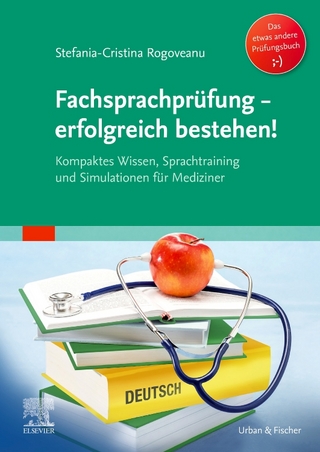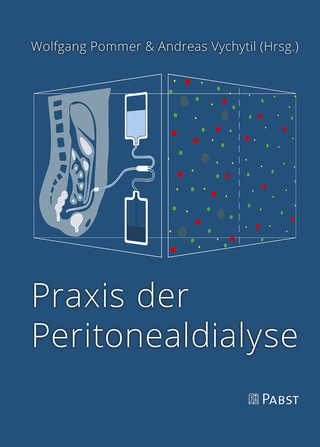
Bailey & Scott's Diagnostic Microbiology
Mosby (Verlag)
978-0-323-08330-0 (ISBN)
- Titel erscheint in neuer Auflage
- Artikel merken
The new 12th edition of Bailey & Scott's Diagnostic Microbiology solidifies its reputation as the classic text in the field of microbiology. This new edition features the same comprehensive, authoritative content - and adds new and updated material throughout. The team of authors includes three well-respected clinical microbiologists, all of whom have experience both in the classroom and the clinical laboratory.
Part I: Basic Medical Microbiology 1. Microbial Taxonomy 2. Bacterial Genetics, Metabolism, and Structure 3. Host-Microorganism Interactions Part II: General Principles in Clinical Microbiology Section 1: Safety and Specimen Management 4. Laboratory Safety 5. Specimen Management Section 2: Approaches to Diagnosis of Infectious Diseases 6. Role of Microscopy 7. Traditional Cultivation and Identification 8. Nucleic Acid-Based Analytic Methods for Microbial Identification and Characterization 9. Immunochemical Methods Used for Organism Detection 10. Serologic Diagnosis of Infectious Diseases Section 3: Evaluation of Antimicrobial Activity 11. Principles of Antimicrobial Action & Resistance 12. Laboratory Methods and Strategies for Antimicrobial Susceptibility Testing Part III: Bacteriology Section 1: Principles of Identification 13. Overview of Bacterial Identification Methods and Strategies Section 2: Catalase-Positive, Gram-Positive Cocci 14. Staphylococcus, Micrococcus, and Similar Organisms Section 3: Catalase-Negative, Gram-Positive Cocci 15. Streptococcus, Enterococcus, and Similar Organisms Section 4: Non-Branching, Catalase-Positive, Gram-Positive Bacilli 16. Bacillus and Similar Organisms 17. Listeria, Corynebacterium, and Similar Organisms Section 5: Non-Branching, Catalase-Negative, Gram-Positive Bacilli 18. Erysipelothirix, Lactobacillus, and Similar Organisms Section 6: Branching or Partially Acid-Fast, Gram-Positive Bacilli 19. Nocardia, Streptomyces, Rhodococcus, Oerskovia, and Similar Organisms Section 7: Gram-Negative Bacilli and Coccobacilli (MacConkey-Positive, Oxidase-Negative) 20. Enterobacteriaceae 21. Acinetobacter, Stenotrophomonas, and Other Organisms Section 8: Gram-Negative Bacilli and Coccobacilli (MacConkey-Positive, Oxidase-Positive) 22. Pseudomonas, Burkholderia, and Similar Organisms 23. Achromobacter, Rhizobium, Ochrobactrum, and Similar Organisms 24. Chryseobacterium, Sphingobacterium, and Similar Organisms 25. Alcaligenes, Bordetella (Nonpertussis), Comamonas, and Similar Organisms 26. Vibrio, Aeromonas, Plesiomonas shigelloides, and Chromobacterium violaceum Section 9: Gram-Negative Bacilli and Coccobacilli (MacConkey-Negative, Oxidase-Positive) 27. Sphingomonas paucimobilis and Similar Organisms 28. Moraxella 29. Eikenella corrodens and Similar Organisms 30. Pasteurella and Similar Organisms 31. Actinobacillus, Kingella, Cardiobacterium, Capnocytophaga, and Similar Organisms Section 10: Gram-Negative Bacilli and Coccobacilli (MacConkey-Negative, Oxidase-Variable) 32. Haemophilus Section 11: Gram-Negative Bacilli that are Optimally Recovered on Special Media 33. Bartonella and Afipia 34. Campylobacter, Arcobacter, and Helicobacter 35. Legionella 36. Brucella 37. Bordetella pertussis and Bordetella parapertussis 38. Francisella 39. Streptobacillus moniliformis and Spirillum minus Section 12: Gram-Negative Cocci 40. Neisseria and Moraxella catarrhalis Section 13: Anaerobic Bacteriology 41. Overview and General Considerations 42. Laboratory Considerations Section 14: Mycobacteria and Other Bacteria with Unusual Growth Requirements 43. Mycobacteria 44. Obligate Intracellular and Nonculturable Bacterial Agents 45. Cell Wall-Deficient Bacteria: Mycoplasma and Ureaplasma 46. The Spirochetes Part IV: Parasitology 47. Overview of the Methods and Strategies in Parasitology NEW! 48. Intestinal Protozoa NEW! 49. Blood and Tissue Protoza NEW! 50. Protozoa from Other Body Sites NEW! 51. Intestinal Nematodes NEW! 52. Tissue Nematodes NEW! 53. Blood Nematodes NEW! 54. Intestinal Cestodes NEW! 55. Tissue Cestodes NEW! 56. Intestinal Trematodes NEW! 57. Liver and Lung Trematodes NEW! 58. Blood Trematodes NEW! Part V: Mycology 59. Overview of Fungal Identification Methods and Strategies NEW! 60. Hyaline Molds, Zygomycetes, Dermatophytes, and Opportunitistic and Systemic Mycoses NEW! 61. Dematiaceious Molds NEW! 62. Opportunistic Atypical Fungus: P. jiroveci NEW! 63. The Yeasts NEW! 64. Antifungal Susceptibility Testing, Therapy and Prevention NEW! Part VI: Virology 65. Overview of the Methods and Strategies in Virology NEW! 66. Viruses in Human Disease NEW! 67. Antiviral Therapy, Susceptibility Testing and Prevention NEW! Part VII: Diagnosis by Organ System 68. Bloodstream Infections 69. Infections of the Lower Respiratory Tract 70. Upper Respiratory Tract Infections and Other Infections of the Oral Cavity and Neck 71. Meningitis and Other Infections of the Central Nervous Systems 72. Infections of the Eyes, Ears, and Sinuses 73. Infections of the Urinary Tract 74. Genital Tract Infections 75. Gastrointestinal Tract Infections 76. Skin, Soft Tissue, and Wound Infections 77. Normally Sterile Body Fluids, Bone and Bone Marrow, and Solid Tissues Part VIII: Clinical Laboratory Management 78. Quality in the Clinical Microbiology Laboratory 79. Infection Control 80. Sentinel Laboratory Response to Bioterrorism Glossary
| Zusatzinfo | Approx. 840 illustrations in full color |
|---|---|
| Verlagsort | St Louis |
| Sprache | englisch |
| Maße | 222 x 281 mm |
| Themenwelt | Medizin / Pharmazie ► Medizinische Fachgebiete |
| ISBN-10 | 0-323-08330-7 / 0323083307 |
| ISBN-13 | 978-0-323-08330-0 / 9780323083300 |
| Zustand | Neuware |
| Haben Sie eine Frage zum Produkt? |
aus dem Bereich



